Office towers go higher, bigger, greener – but what’s the point?
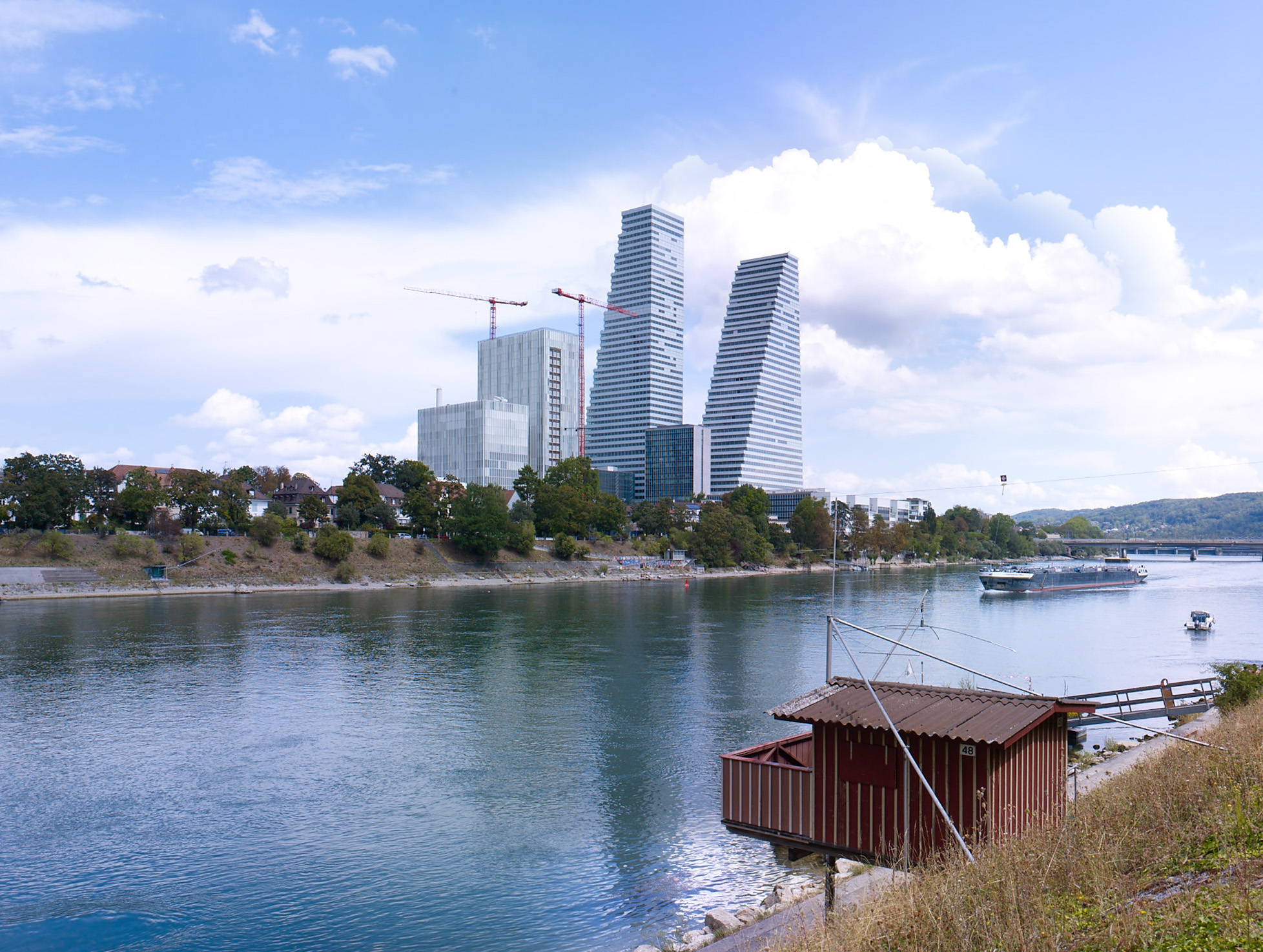
Why increase the density of cities with office buildings? Working practices are in such flux at the moment that soon we may not need traditional offices. An analysis of the current debate in Switzerland.
The 205-metre-high office tower which looks like a giant shark fin rising over the roofs of Basel is “one of the world’s most sustainable high-rises”, said pharmaceutical giant Roche in a statementExternal link when the building, Roche Tower 2, also known as Building 2, opened last September. In fact the elegant, shimmering white structure is doubly superlative: it’s the most sustainable and the tallest in Switzerland.
What is surprising is that all the facts and figures provided about the building focus on its sustainability, not its record height. CHF550 million ($587 million) is what it cost to put it up, and it provides 3,200 workplaces for Roche employees on 50 floors. The new Swiss record of 205 metres for an office block is mentioned just in passing.
At a time when many people are finding that only part of a week’s work needs to be done in the traditional office, it’s astonishing that Roche feels the need to build two, if not three, giant towers.
When so many employees now do most of their work remotely and online, the issue of sustainability of office space is being cast in an entirely new light. Would it not be far more sustainable to keep commuter travel down to a minimum, and have people come to the office environment only when they needed to? For the kind of meeting, say, where being face-to-face is preferable to the comfortable but distanced conference call.
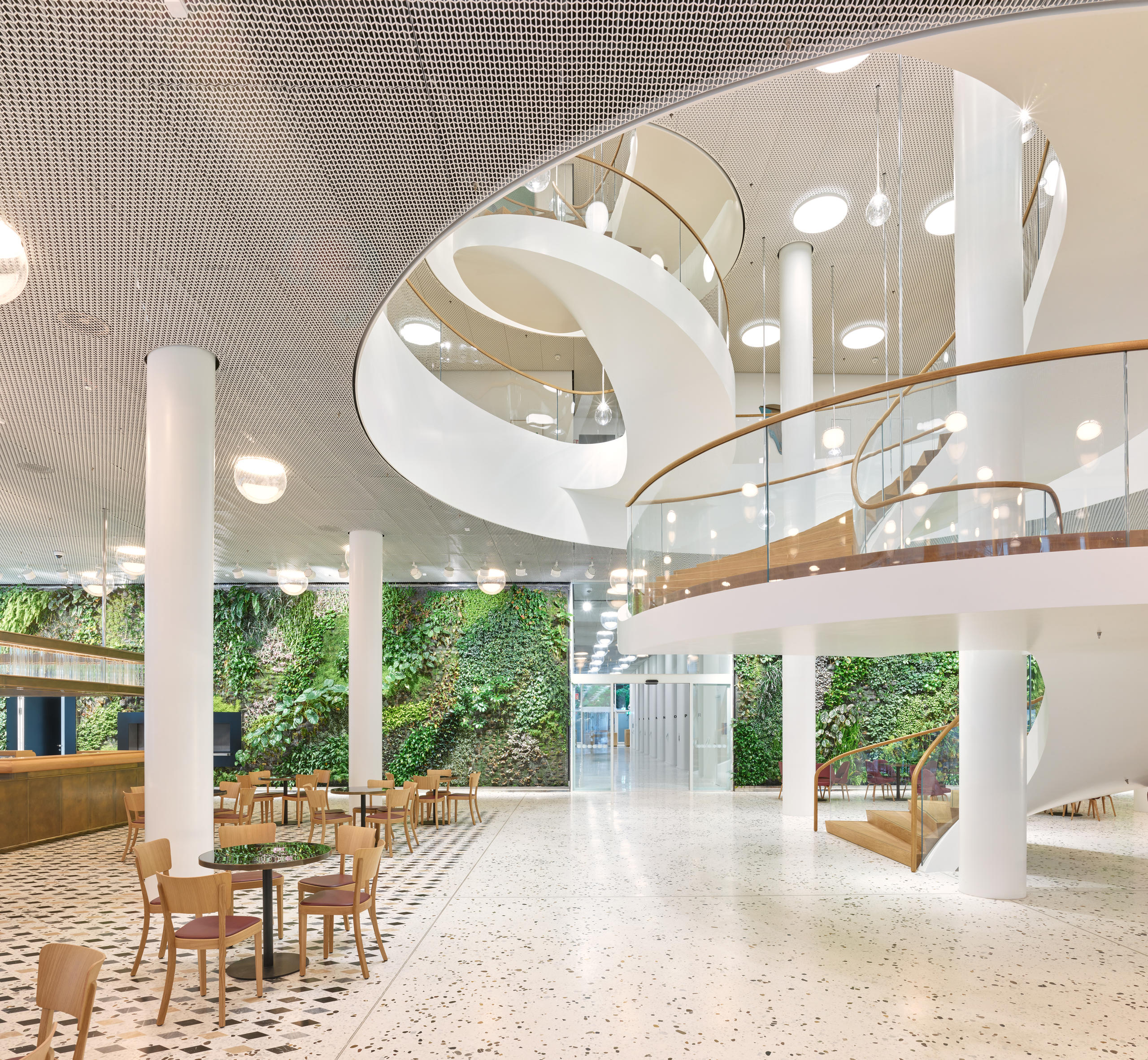
Specialists who study the workplace have been wondering just how productive work might be among the comforts of home or in an Alpine chalet – even before the pandemic arrived and lockdowns were enforced. The pandemic gave a real impulse to new thinking about workplace organisation. Working at home without a long commute suddenly became an everyday reality thanks to Covid. Working from home was, for a time, mandatory for many people.
Yet by the time the pandemic happened, most of the tower blocks now used as office space had been built. The building sites where cranes were lifting walls and girders into the air had long since been planned to completion and continued to follow pre-pandemic rules.
The building industry defines the ingredients for sustainable construction in terms of modern building technology and an environmentally aware choice of materials. Yet replacing the ubiquitous concrete with wood has succeeded in only a few cases, with low-rise buildings. The broader issue of using fewer resources in building and building maintenance can now no longer be ignored by the industry.
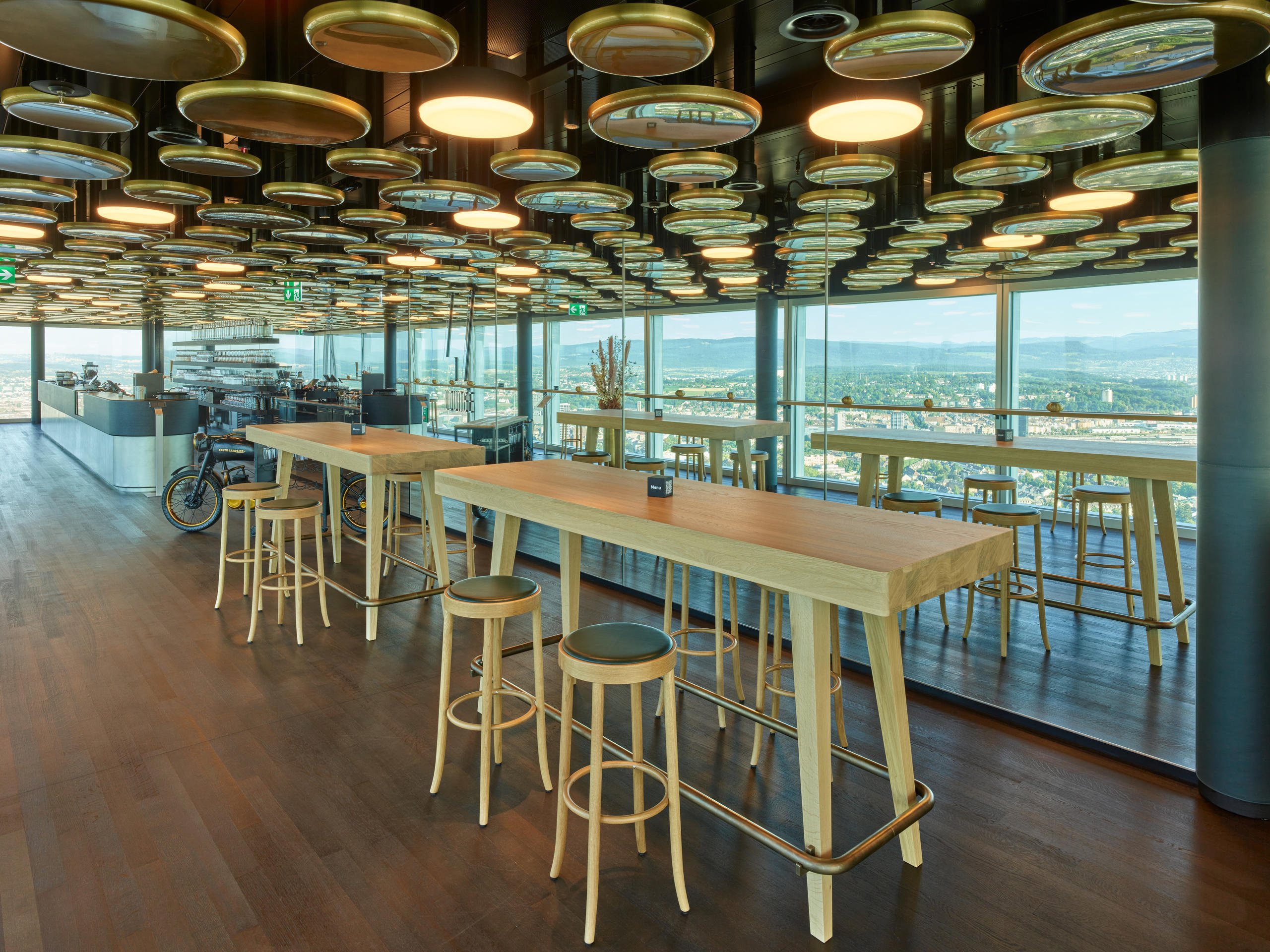
Outdoing its twin
Building 2 stands very close to its twin. With its white, stepped façade, the older building looks the same but is a little shorter at 178 metres. In 2016 Building 1 broke the Swiss record for tallest building, overtaking 126-metre Prime Tower in Zurich, which had held the record for five years.
The amounts by which these buildings exceeded the normal building code limit – 25 metres in most Swiss cities and towns – seemed to rise inexorably. The excitement among the public was considerable. But after taking a few months to get used to it, the locals – in Zurich and now in Basel – stopped talking about it.
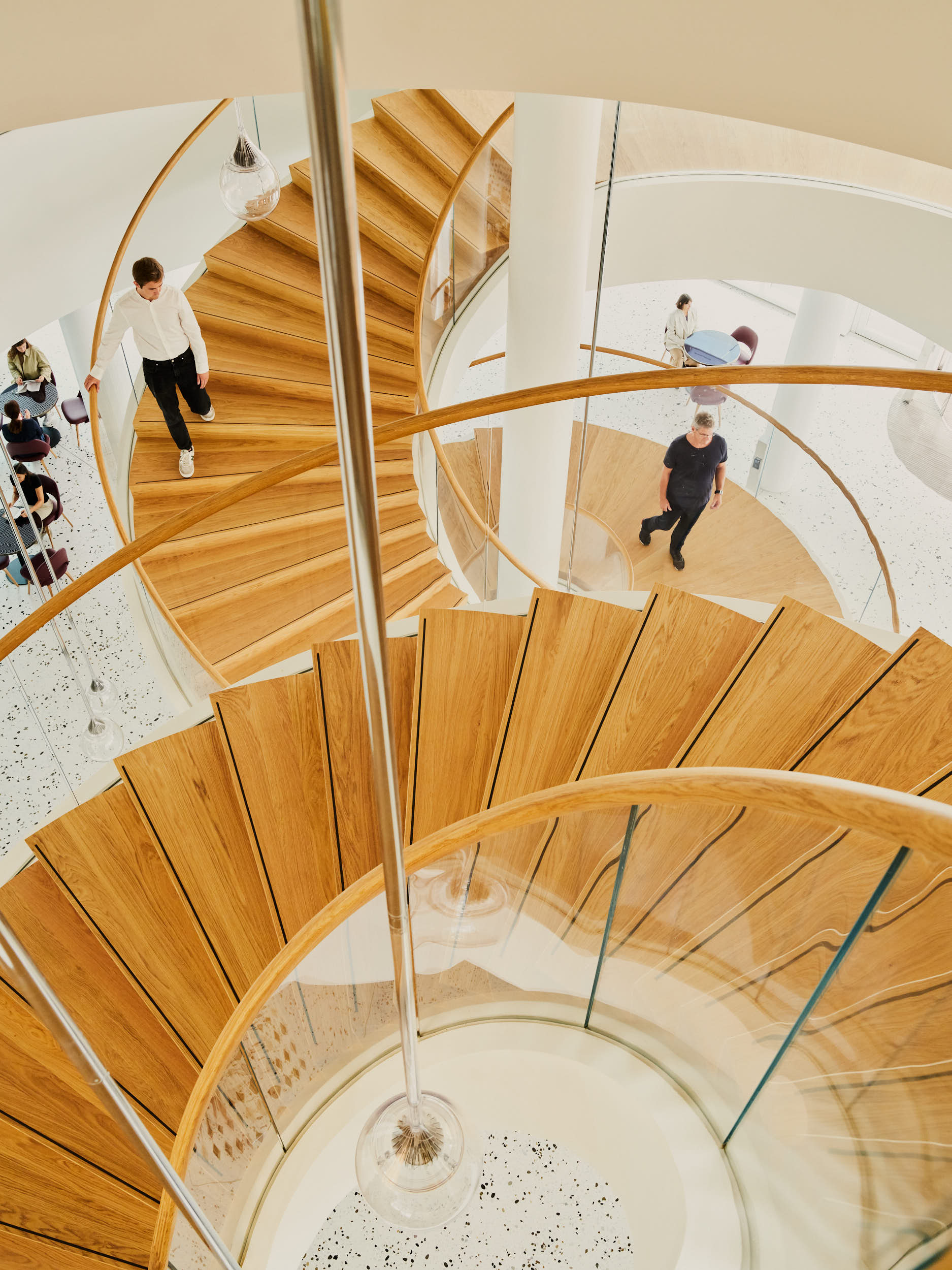
Who still comes in to work?
More cause for concern than the changed city skyline is the interior of the office towers. This kind of building seems to be doomed to extinction. On the one hand, companies want to save on space. On the other, employees only want to come in for a chat every so often – everything else can be done at home, and done even better. So do office buildings have a future at all?
The office of the future will be more like a club. This is the view of Nora FehlbaumExternal link, CEO of design company Vitra. In such a “club office” the important thing is exchange of ideas and a sense of identity, just like in a chess club, a debating club or a football club. In their range of furnishings, Fehlbaum’s company makes a distinction between quiet and active, private, and sociable spaces.
Work activity inside the Roche towers follows this trend and avoids the idea of the individual office as a private retreat. The architects Herzog & de Meuron, who conceived and designed the new Roche landmarks, relate this concept of the workplace to the idea of “activity-based working”. This was developed 50 years ago in the US, and from the outset it proposed to change the notion of a fixed workstation or desk to more flexible kinds of organisation.
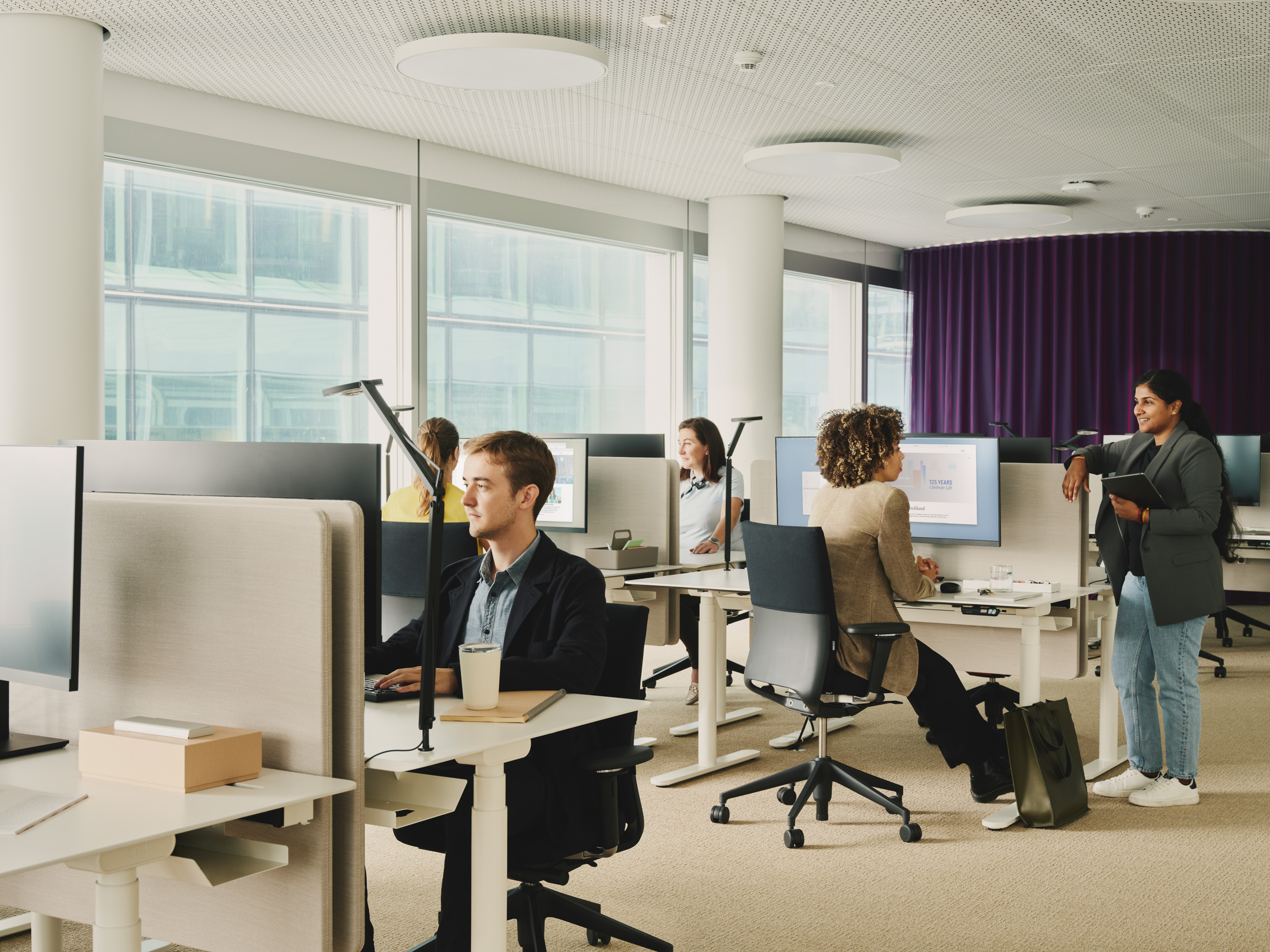
In many international firms, activity-based working has become the measure of all things as regards spatial organisation, and this has clearly happened with Roche too. Whether the many office spaces in the new Basel towers are being fully put to use is unknown because, according to the company’s public relations office, “we do not track the actual use of office space by department”.
There is, however, room up there for thousands of work stations. With its 74,200sq/m floor area (of which 58,000sq/m are designated as office space), Building 1 has room for 2,000 employees. With its 83,000sq/m floor area (61,500sq/m for offices), Building 2 has room for 3,200 employees. Building 3, the 221-metre vision of the future, will have even more room to offer.
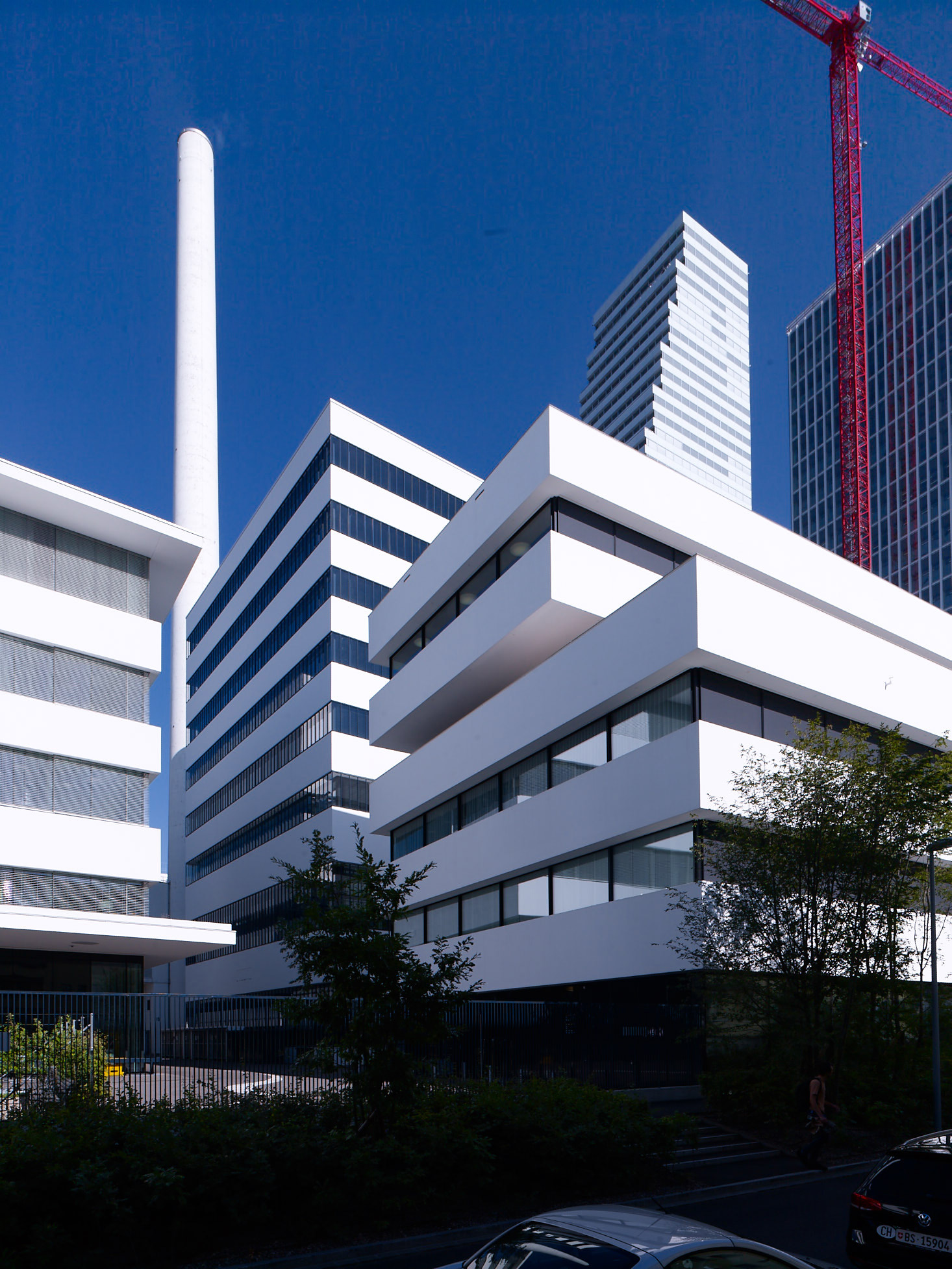
Roche stresses not so much the number of people involved as their togetherness. The symbolism of these urban corporate icons is to strengthen identification with the company. Building 2 is, as the statement said, “a key element in the plan to bring employees together at the site”.
Superlatives are relative
No one doubts that superlatives played a role in the planning of these office towers. However, they are not the only buildings to claim records for sustainability. The extension to the Zurich Kunsthaus which opened two years ago also presented itself as outstanding in terms of sustainability, thanks to excellent technical solutions for a large building – that some people would have liked to be a little smaller.
When Roche began trumpeting its own achievement in sustainable building, it met widespread scepticism. An article on the website of the specialist architecture publisher Verlag für Baukultur External linkfor example pointed out that “the grey energy needed for the concrete support base of a skyscraper like that, and the projected demolition of buildings around it” had not been included in the calculation.
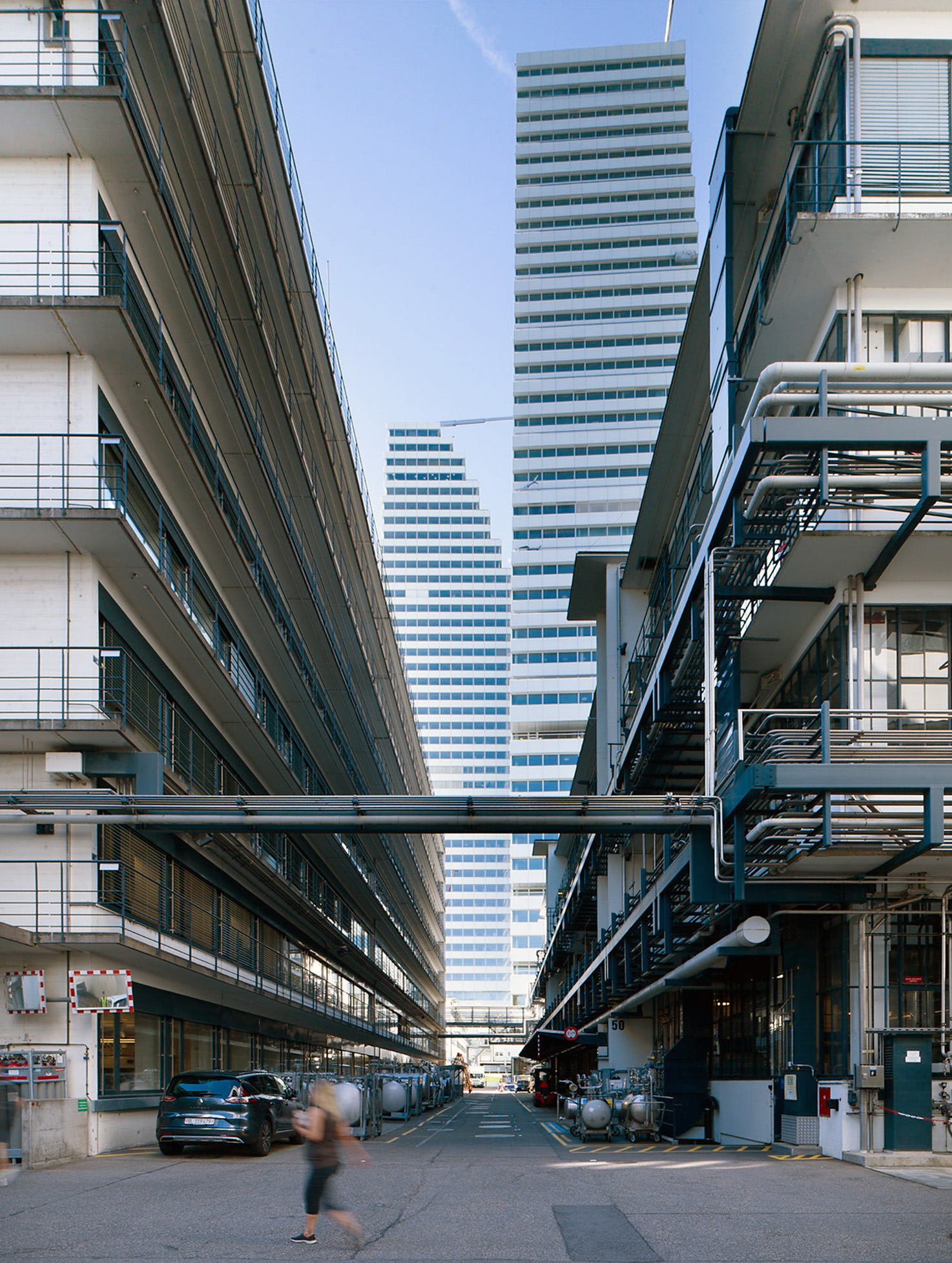
Nevertheless, as building engineer Martin Stumpf explained in an interview on the same website, the refinements made to the design of Building 2 yielded a material savings of 8%External link.
So now we have to wait for Building 3. More size and height will mean new superlatives as regards potential savings. However, there is one troubling aspect to this onward-and-upward vision that has been glossed over. Whether a building can be called sustainable is really a matter of what’s counted and the reference values adopted. These might soon change, given the current pressure on the building industry to be a lot more inclusive in their calculations of environmental impact.
From skyscraper to clubhouse
Discussing the sustainability of these bold new Roche towers, the question arises of what happens if new patterns of working no longer require office towers?
The office as club could be accommodated, say, in one of the small historic buildings around the Roche campus – for example the historic work of the architects Roland Rohn and Rudolf Salvisberg, now slated for demolition.
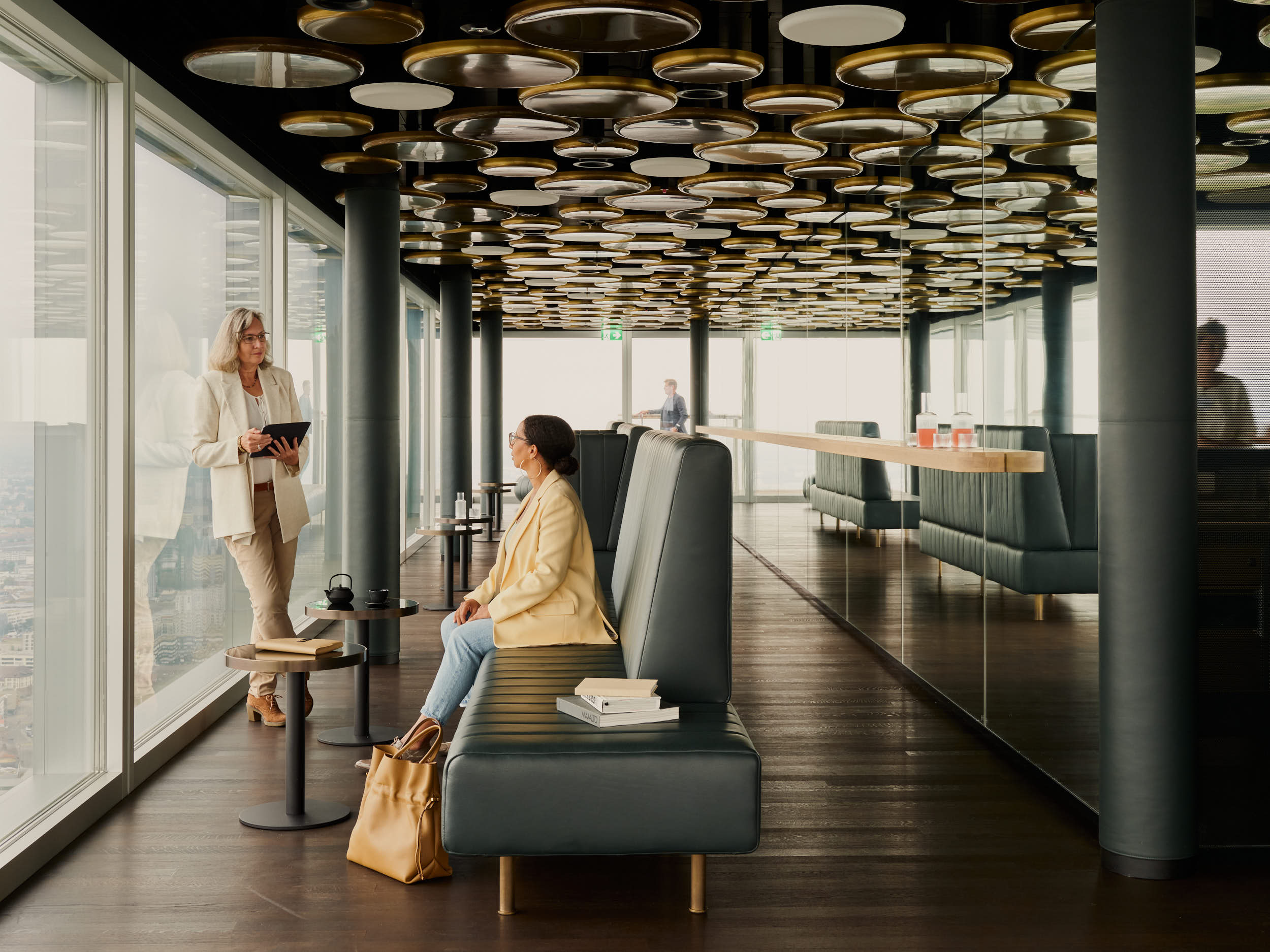
Obsolete office buildings can be renovated. This is being demonstrated by the PWG Foundation, which works to preserve and maintain inexpensive living and commercial spaces in the city of Zurich. On the edge of town in Leutschenbach an office building from the 1960s External linkwill be converted into a block of flats next year.
The specification there is to intervene as little as possible in the original structure, in other words to demolish as little material as possible and leave as much of it as possible.
This is proving a challenge in the case of the six-storey steel-and-concrete building in Leutschenbach. How a renovation of the 50-plus storeys of the Roche towers could ever be feasible, no one knows.
Repurposing older buildings calls for considerable planning skill. In return, this approach holds out the promise of real sustainability. The likelihood of it setting new records or achieving superlatives is, of course, a lot less.
Edited by Marc Livingston. Translated from German by Terence MacNamee

In compliance with the JTI standards
More: SWI swissinfo.ch certified by the Journalism Trust Initiative









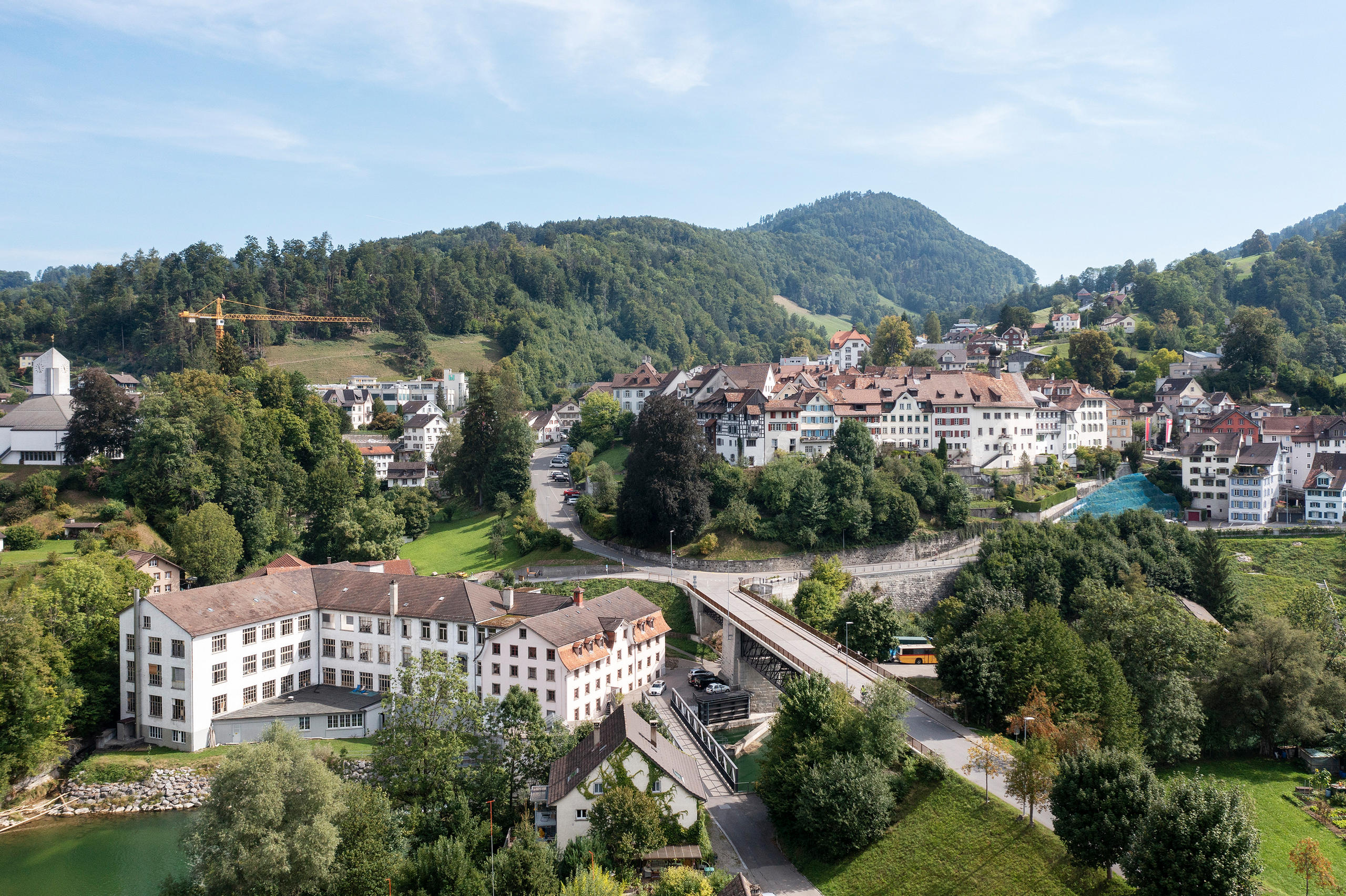
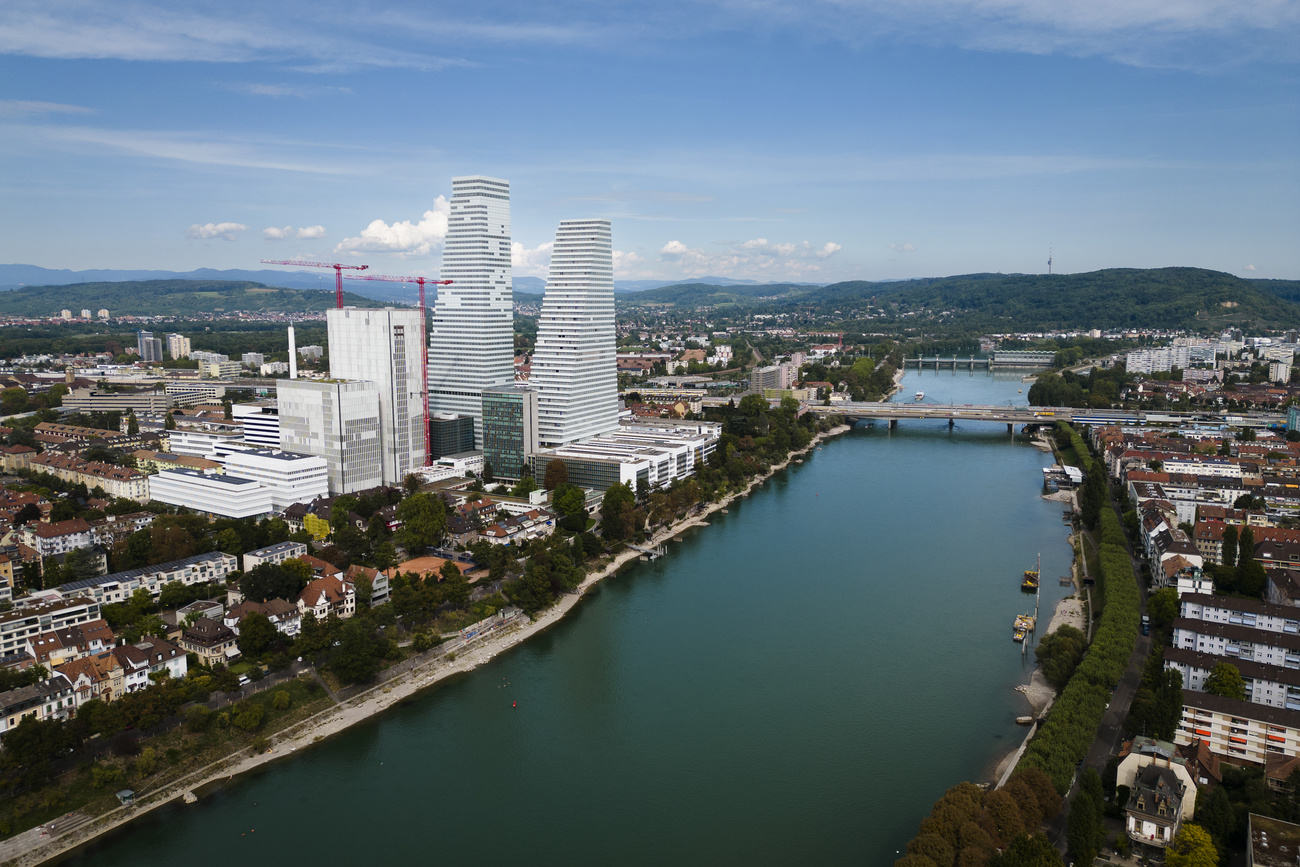
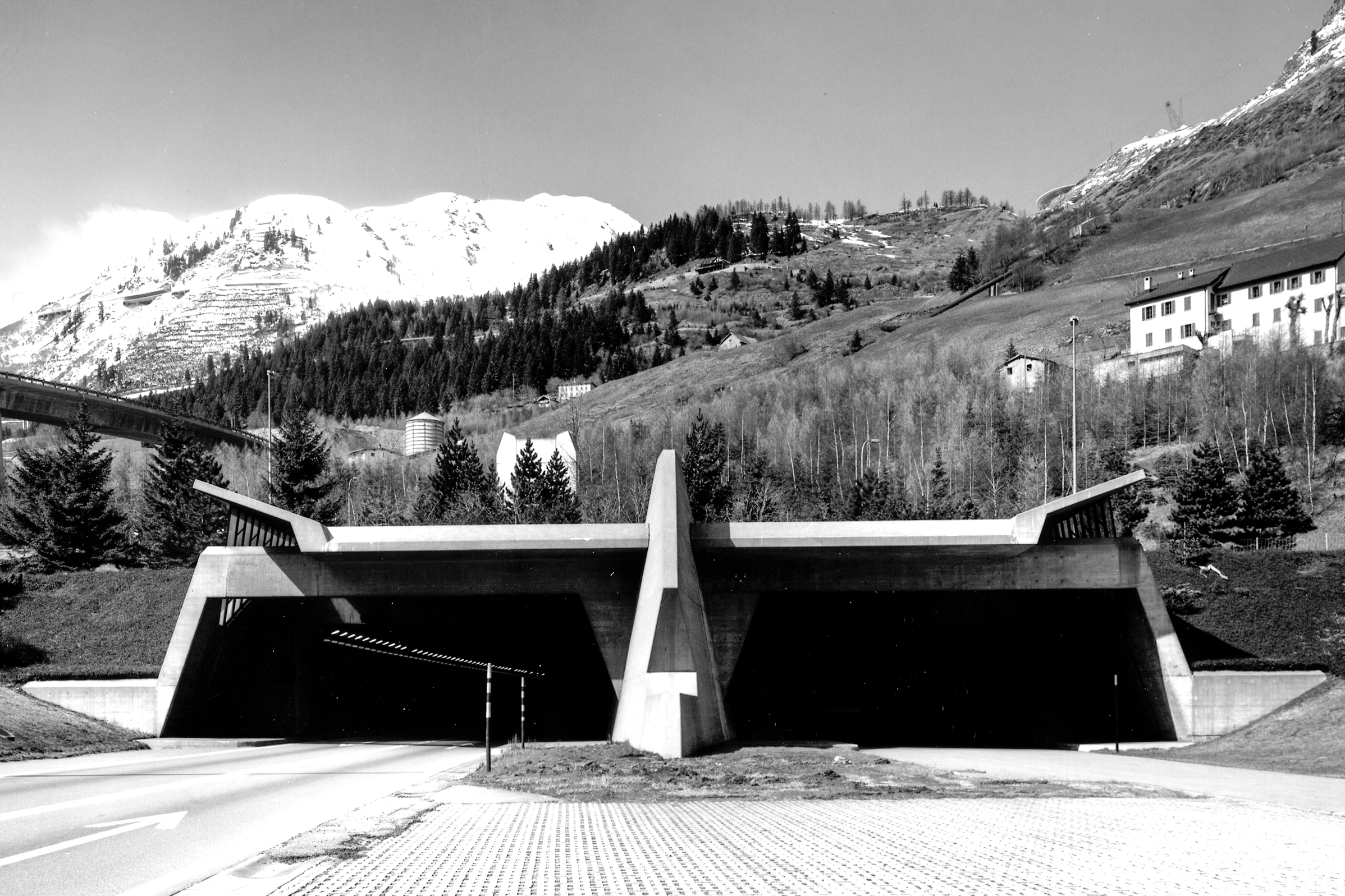
You can find an overview of ongoing debates with our journalists here . Please join us!
If you want to start a conversation about a topic raised in this article or want to report factual errors, email us at english@swissinfo.ch.